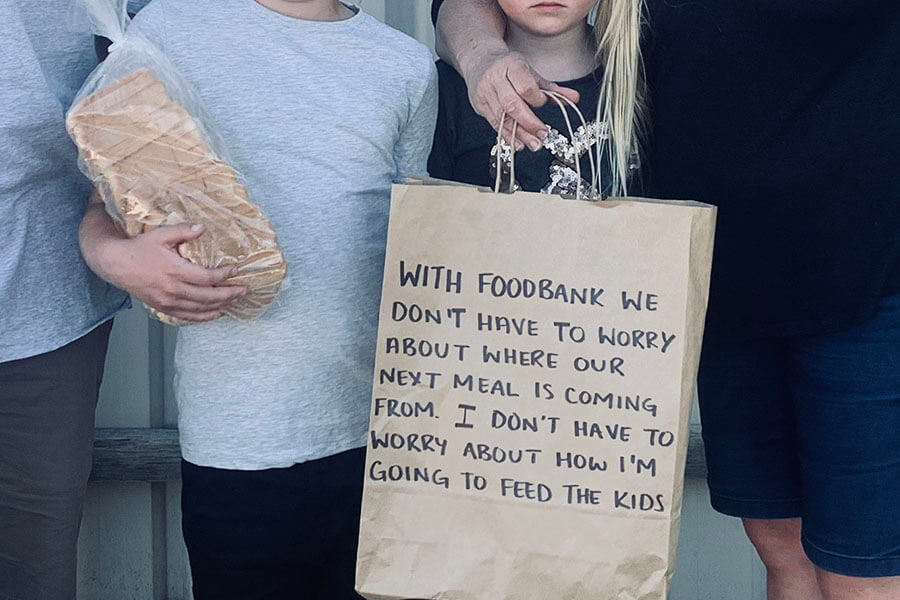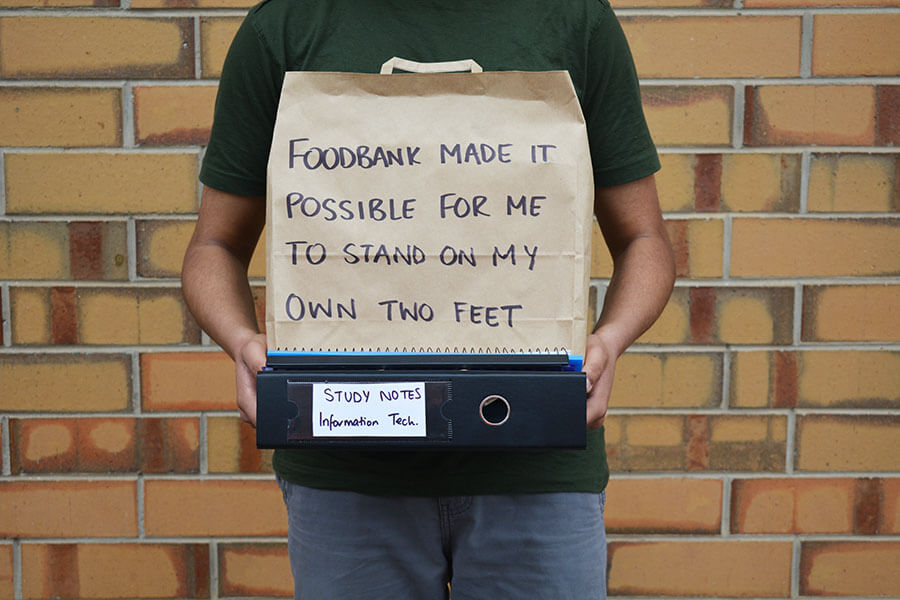FOODBANK HUNGER REPORT: SHINING A LIGHT ON THE ISSUE OF FOOD INSECURITY IN THE MIDST OF A GLOBAL PANDEMIC.
The Foodbank Hunger Report provides an annual snapshot of Australia’s growing food insecurity problem. The report is now well established as the definitive publication on the incidence and causes of food insecurity in Australia.
The 2020 Hunger Report is unlike any previous Foodbank Hunger Reports, as it presents a picture of food insecurity in the midst of a once-in-100-year crisis. COVID-19 is having a profound effect on every aspect of people’s lives, so it is not surprising that it is impacting the food security of Australians. This report looks at how COVID-19, and the responses of governments, businesses and individuals to the pandemic, are affecting the ability of people to have food for themselves and their families.
DEMAND FOR FOOD RELIEF IS UP
COVID-19, and its flow on effects, have changed the face of food insecurity in Australia. The global pandemic has impacted the lives of all Australians. Charities have seen a significant increase in the frequency of demand for food relief. In 2019, 15% of Australians experiencing food insecurity were seeking food relief at least once a week. In 2020, this has doubled to 31%.
KEY STATS
- While charities are seeing demand for food relief become erratic and unpredictable, overall demand is up by an average of 47%.
- Food insecure Australians are seeking assistance from charities more frequently. The proportion of food insecure Australians seeking food relief at least once a week has more than doubled since last year, from 15% to 31%.
- Young Australians are the hardest hit, with 65% of food insecure 18 to 25-year-olds going without food at least once a week due to the pandemic – significantly more than any other age group.
“Those who were already struggling are doing it even tougher and now they’ve been joined by people who’ve never experienced hunger before.”
- More than a quarter (28%) of those experiencing food insecurity had never faced it before the pandemic. Charities are seeing significant numbers of two new groups in particular: casual employees and international students.
- Those Australians who were struggling to obtain food before COVID-19 are going hungry even more often now. 43% of food insecure Australians are going one whole day a week without eating vs 30% in 2019.
- 61% of food insecure Australians have accessed food relief since COVID-19 hit but the other 39% have not reached out for the help they need. The most common barriers to accessing relief are embarrassment (33%), shame (30%) or thinking there might be others in greater need (33%).
“Government benefits are providing temporary relief but there are great fears for the future.”
While government assistance, such as JobKeeper and JobSeeker, has provided vital temporary relief for many, 62% say they are not receiving the assistance they need.
- 37% say they need more than they’re getting
- 21% are ineligible for any additional support
- 4% have found it too difficult to apply
- When it comes to post-COVID-19, almost 35% of food secure Australians don’t know how they will cope or expect they won’t cope at all when the additional government support is withdrawn.

Lauren, Mother of two (41)
Foodbank SA Food Hub Client
Due to a chronic illness, Lauren is unable to work and her husband has struggled to find work, particularly through COVID-19. Lauren recalls the changes they have seen in their lives in 2020.
“…once we paid our rego, petrol for appointments and bills, it left us with very little for food…We were worrying about where our next meal was coming from and how we would feed the kids”
The family have now been accessing referrals to the Foodbank Food Hub to access free and low cost food to help during their difficult time.

Andy, International Student (19)
Foodbank SA Food Hub Client
Andy had only just arrived in SA to study his IT degree at University.
“I struggled to find work for the first 3-4 months as nobody wanted people that were new arrivals because of COVID”
Andy was told about Foodbank through his University and via Study Adelaide, he was able to access a referral voucher to attend a Foodbank Food Hub.
“Foodbank made it possible for me to stand on my own two feet”.
HUNGER IN SOUTH AUSTRALIA
Unfortunately, South Australia is once again experiencing one of the highest levels of food insecurity across the country with 13% of South Australians having experienced food insecurity in last 12 months.
- 31% of food insecure people in SA had never experienced food insecurity prior to the COVID-19 Pandemic
- In 2019, 8% of those South Australian residents experiencing food insecurity were seeking relief one time per week, in 2020 this has more than doubled to 19%.
- The 3 main causes of food insecurity in South Australia in 2020: rent/mortgage payments (52%), unexpected bill or large expense (50%), low income or pension (41%).
- 54% of food insecure South Australians don’t know how they will cope or believe they will not cope when the government support is cut back.
We can’t help those experiencing hunger without your support. A donation of $100 will provide over 1 month of food for families like Lauren’s.
It is clear from the results of this years Hunger Report, that it has been a difficult year for many South Australian’s. At Foodbank SA we are bracing ourselves for the predicted increase in South Aussies requiring food relief and as we continue to support those in need, we could not do what we do without you.
Together we can fight to end hunger in our state.
 Contact us
Contact us Log in
Log in